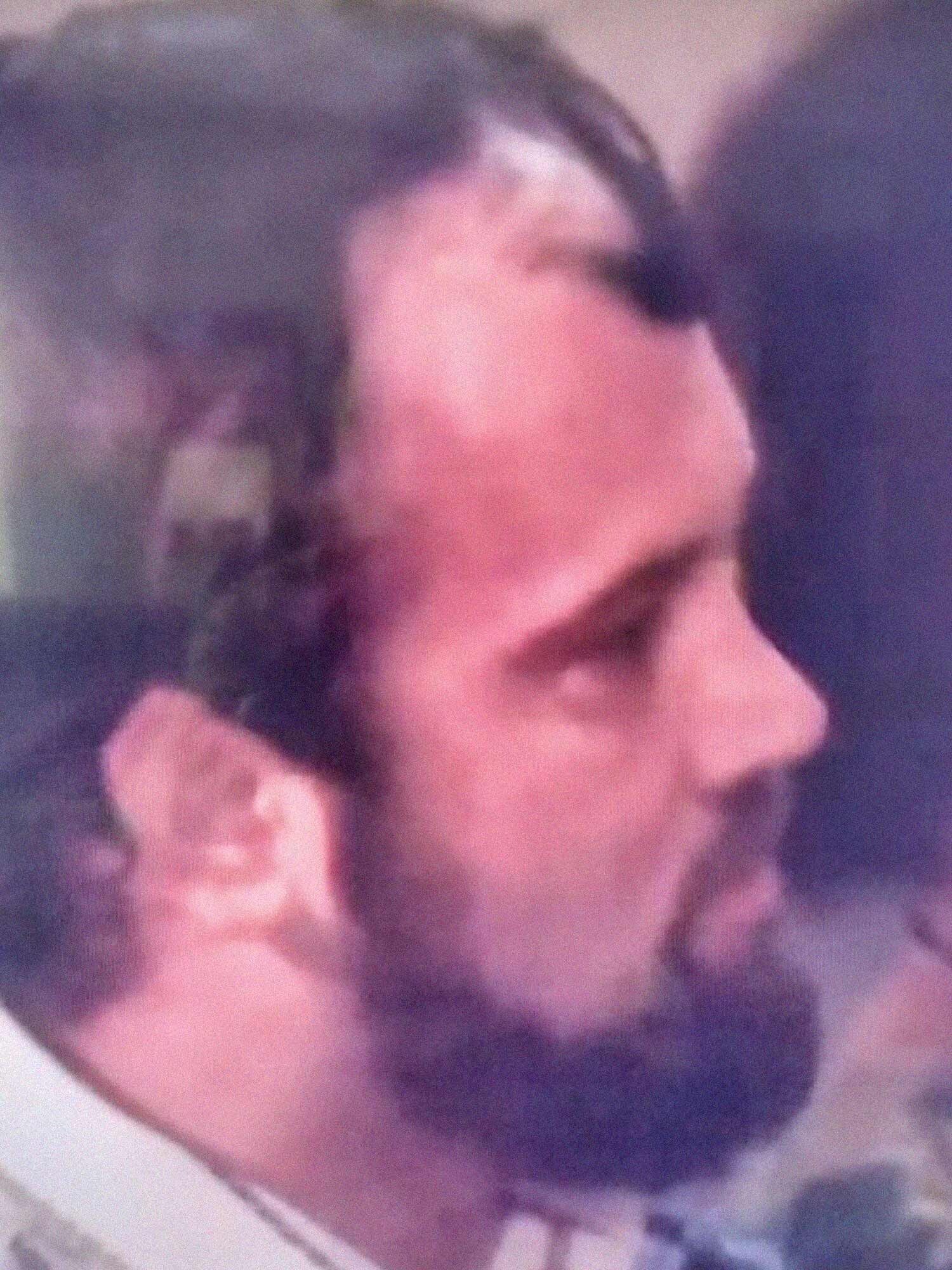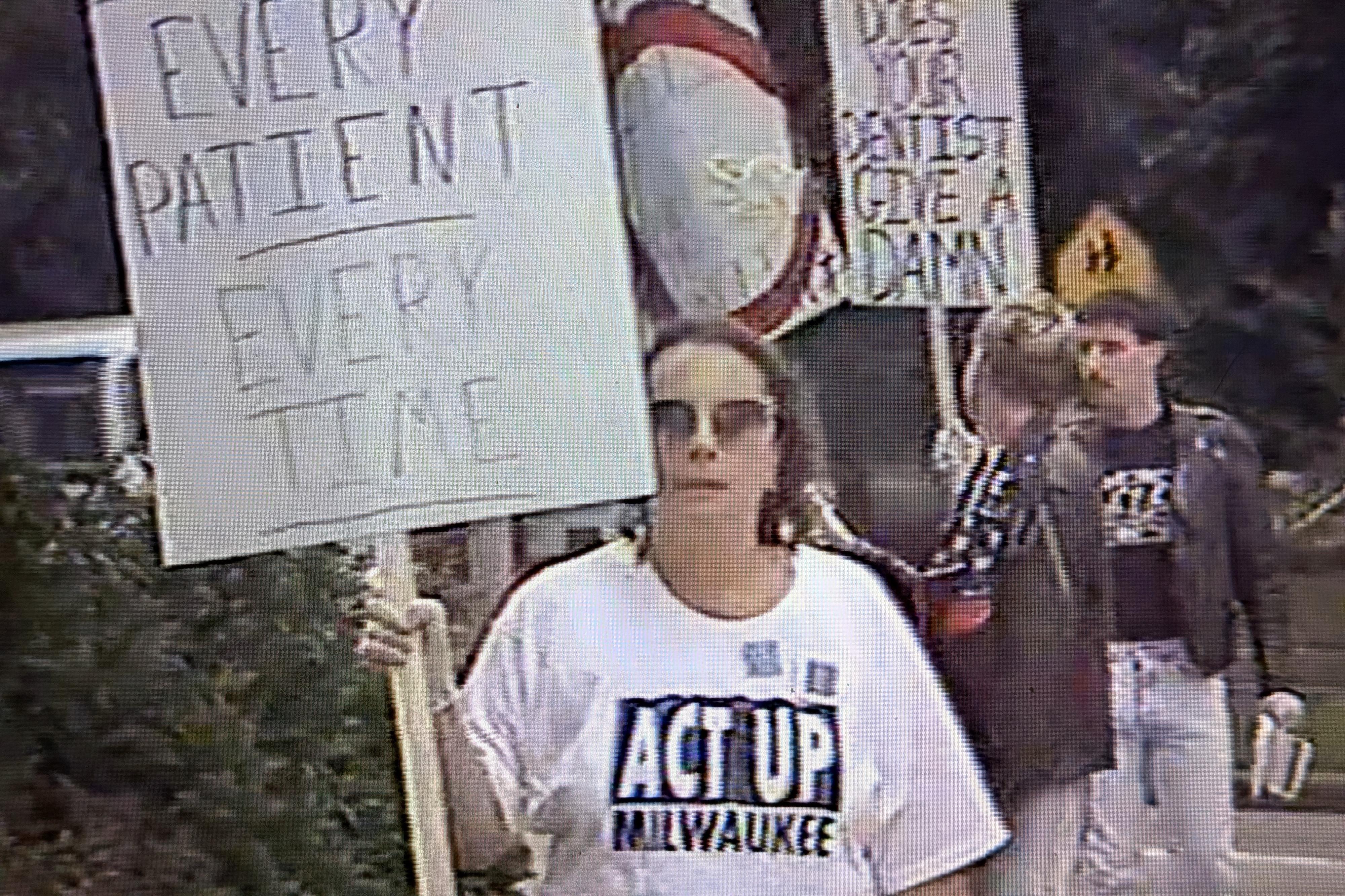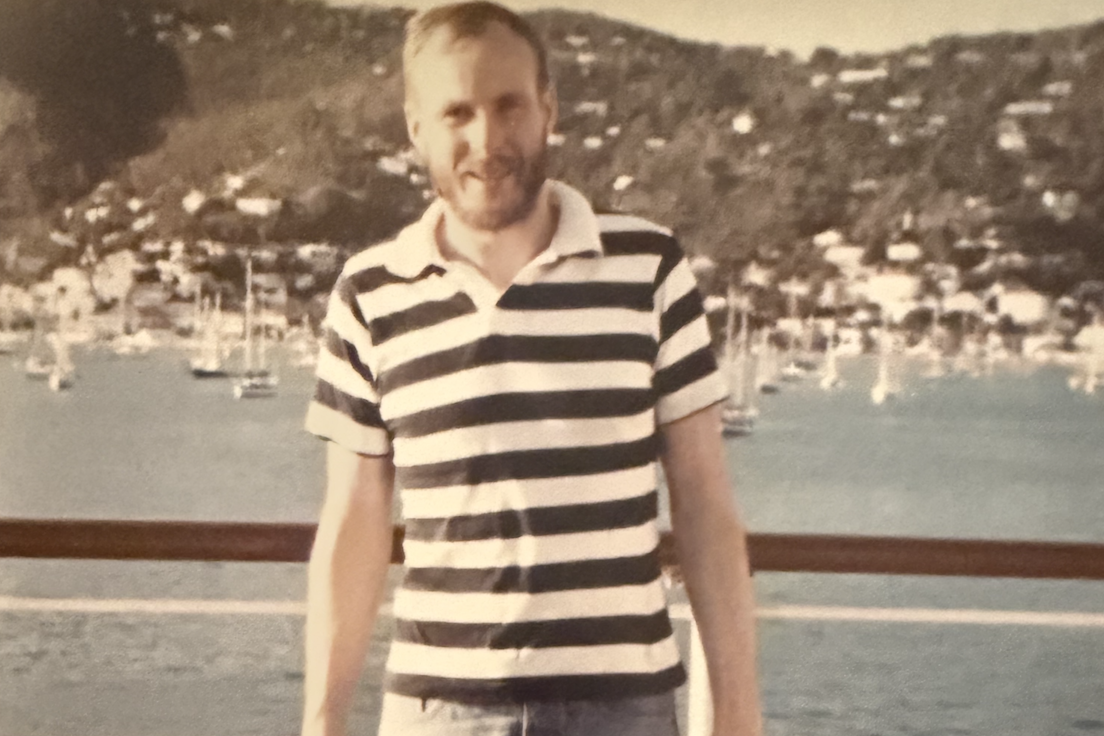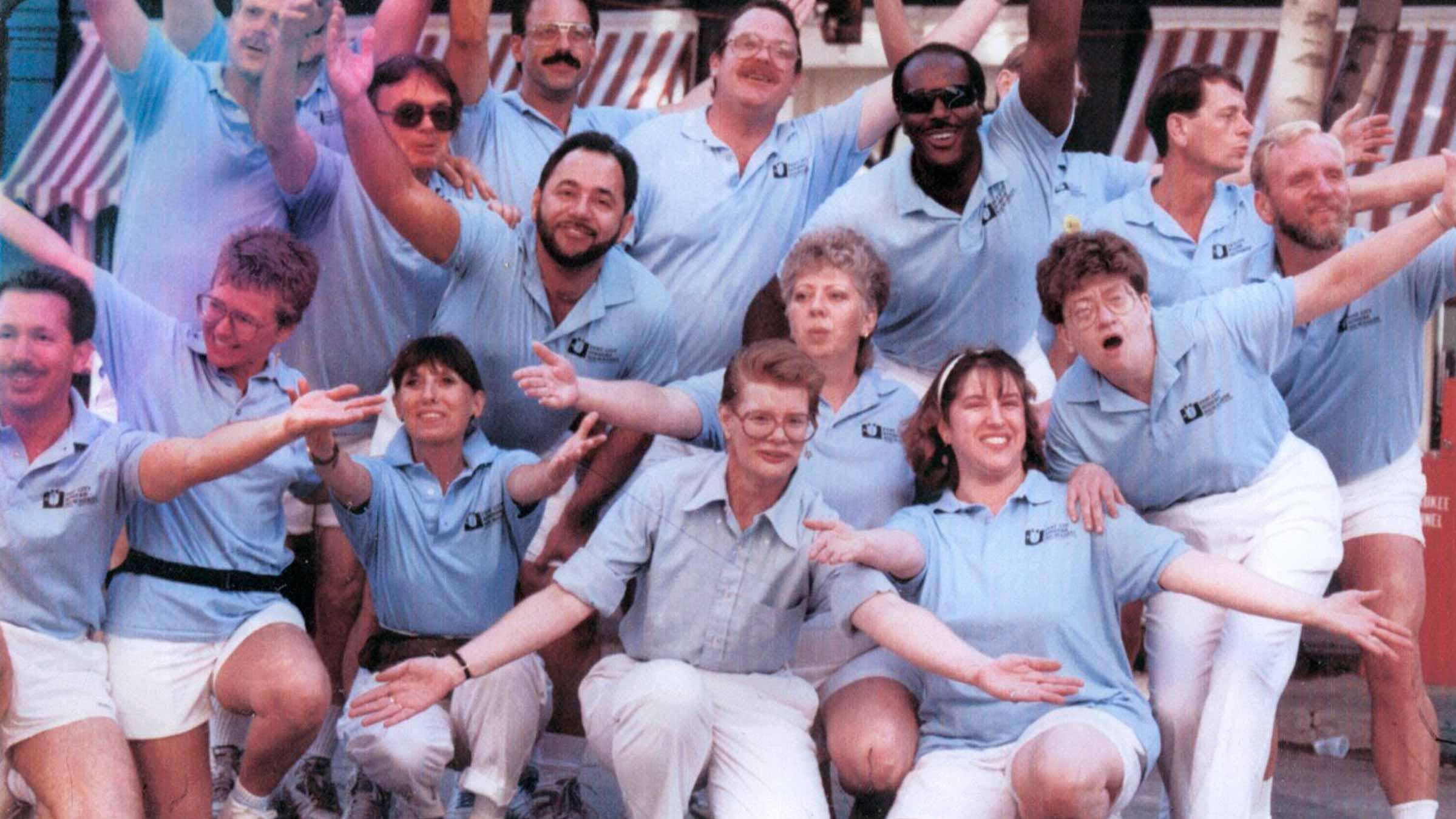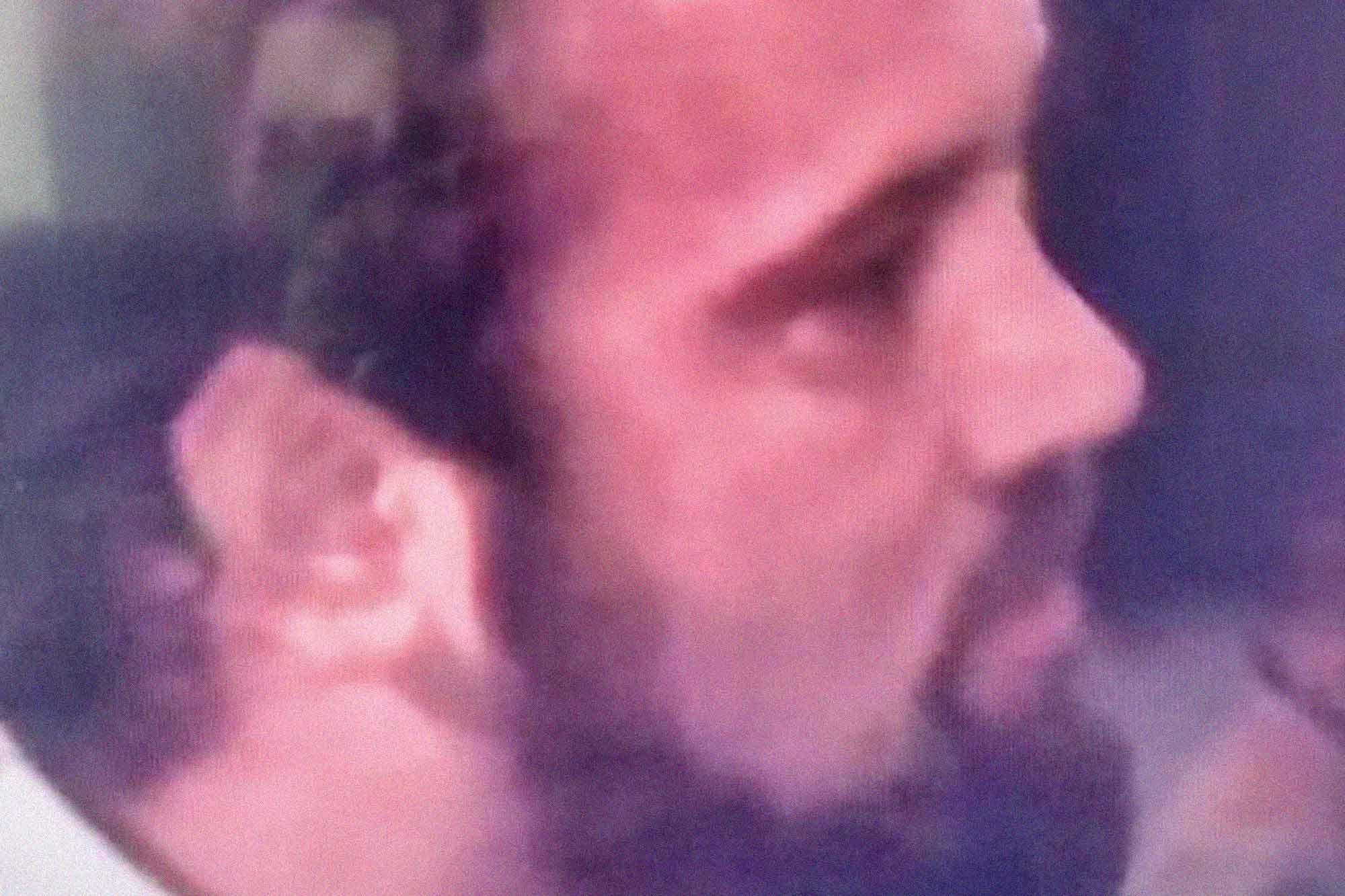
Louis Stimac: Celebrating a long-lost champion of our hidden history

Since 1994, LGBT History Month has been celebrated every October to commemorate the contributions of our community. October was specifically chosen to coincide with National Coming Out Day (October 11) and the first and second marches on Washington for LGBT rights (1979, 1987.)
The 25th anniversary of Stonewall sparked a national consciousness of the unique and separate heritage of LGBTQ people. Stonewall25 inspired a national movement that created the ONE National LGBT Archives, local LGBTQ history projects across the country, and ultimately, the Wisconsin LGBTQ History Project.
But Wisconsin was already decades ahead of this national movement, thanks to Louis Stimac.
Stimac, a passionate community champion, was Wisconsin’s first true LGBTQ historian. Sadly, his name is no longer well-known or recognized, he is rarely mentioned among Wisconsin’s LGBTQ leaders, and few know about the hard-won battles he fought for us all nearly 50 years ago.
This month, we’re paying tribute to a man who sought to document, preserve, and celebrate our shared history – long before we even believed we had a history of our own.
Louis graduated from Eagle River High School in 1959 with intentions of becoming a priest. However, after attending two seminaries, he realized his true calling was elsewhere. Where others saw judgement, rejection, and condemnation in the Bible, Louis only saw lessons of love, acceptance, and salvation. As a gay rights activist, he was emboldened to confront religious intolerance, bigotry, and homophobia whenever and wherever he saw it.
“Why does it matter whom we love? What does matter is that we do love. To be gay is to be a healthy, happy homosexual. To be gay is to enjoy the fact that one loves other people of the same sex. And a person who is gay can be a religious person. Love is always a religious act,” he wrote in 1976. “Neither heterosexual nor homosexual is a better way of life. The best way of life is being oneself, being honest. Honesty is a virtue. Hatred is a vice.”
After moving to Milwaukee, Louis worked for the County Welfare department until his controversial firing in 1971. He lived at St. Nicholas Parish (1155 N. 21st St.) before moving to the Upper East Side, and later, Merrill Park. He served UWM for decades as an administrative assistant, dispatcher, and project manager for the Facilities department.
Upon accepting himself, Stimac penned an emotional coming out letter to his mother, which reveals many of the inner conflicts he navigated in his youth.
“You were trapped by society’s pressures, but I will not let that happen to me,” he wrote. “You married a man in a different time and place you most likely did not want to be stuck with. Just imagine how much your whole life changed that one single night. You wanted to give your baby a name. This is one baby who had rather been raised a legal bastard. For what you have done for me, I am grateful, but nobody has to give up their personal happiness to please others.
I will never be a saint, but I will spend my life seeking justice. I know the hell I went through faking who I was. And if possible, I want as few others to go through the same ordeal: wearing one face to the world, and another face to themselves. The strain is unreal. My only regret is that I did not make my choice a lot sooner. At this point in my life, I’m willing to tell people to fuck off. I would rather be lonely than suffer the hell of other people. Under the guise of tolerating hateful people, we end up hating ourselves.
You probably don’t like much of what you read, but now you know how I feel and think. I am still me. I am just a better version of me now.”
Louis was a founding member of Gay People’s Union. He was personally responsible for filing their articles of nonprofit incorporation. This was no easy process in the early 1970s: raising money for gay rights was next to impossible, several law firms rejected GPU as they didn’t support gay causes, and worst of all, Stimac found it difficult to find five people to commit to being named members of the organization. They were afraid that outing themselves in writing would create something that could be used against them later.
When we think of the Stonewall generation, we think of a huge army of angry, activated, and committed revolutionaries fighting for change. But the truth is that the movement was much, much smaller. Imagine a dozen people who were not only willing to be seen – at a time when just being seen was dangerous – but willing to fight against all odds. That was how liberation began.
"We moved in a short span of time from a sense something was deeply wrong with us -- to the realization that was something radically wrong with society,” reflected Stimac in 1978.
“In one quick and bright flash, we experienced a revelation: we had been mistreated, we were among the oppressed. We had been a silenced majority of invisible men and invisible women. We were unspeakable and unknown for so long, that generations had found comfort in their own abuse. No more.
As we changed our minds, we changed our world. We moved from various forms of self-negation and self-destruction to newfound outrage and outward action. We moved from hiding our sexual and affectionate nature -- to affirming publicly the best parts of our being. We experienced an epic shift in our sense of self. We experienced ourselves as instigators of a movement for social change. We experienced ourselves as history makers. We experienced ourselves as revolutionaries.
From homosexuality as a personal and devastating fate, a private secret shame, a prison sentence from which there was no parole, a curse of endless sorrow and despair, we moved with often dizzying speed towards sweeping, intoxicating feelings of self-acceptance, love, and liberation.
The heterosexual dictatorship tried to keep us out of sight and out of mind. But now, the people of the shadows were in the light, and there was no going back to what once was. That time was over. And we would never let it happen again.
This is our fight… and it is a fight. No one will hand you justice on a silver platter. You have to get in there and grab your share, or starve.”
Still, it wasn’t easy to be a gay rights activist in 1970s Wisconsin. Despite being the founder of the first LGBTQ community center in Milwaukee, Stimac was frequently frustrated by the lack of support from his own community. Complacency – anchored in fear and self-loathing – deeply concerned him.
“The gay scene in Milwaukee is well established and has been that way for over 50 years. Homosexuals are the second largest minority in Wisconsin. Yet, the homosexual who speaks out for gay rights is still an outcast,” wrote Stimac in a Milwaukee Journal editorial in March 1975.
“Many people are uncomfortable around him, threatened by their own fear of the different. ‘I know you exist, just don't remind me of it.’ He even encounters opposition from other gays, closet queens who wail, ‘I'm comfortable in my closet. I embrace my fear, my shame. Just leave me alone, let me hide in my bars and baths.’
Nobody, it seems, wants to talk about homosexuality. But the fact remains that homosexuals exist, in far greater numbers than most people realize. We are everywhere."
Stimac was a furious firebrand. His frustration often rendered in editorial indictments of a society that refused to change. He jokingly called these the “the rantings of a frustrated liberationist.”
“Homosexuals are always in season,” he told the Milwaukee Sentinel in 1977. “Feel free to attack your local fag. It’s fun to hassle pansies. So few dare to fight back. If we keep putting a lid on them, they will never find out how many of them exist or how many happy occasions we have denied them. Rumor has it over 40,000 homosexuals live in the Milwaukee area. Keep it a secret.
Homosexuals should have no rights. A right not to be discriminated against? Absurd! So we must gleefully deprive them the rights to first class citizenship. Queers are not human anyway. Remember, every time you say fruit, pansy, queer, or fag, you help keep them in their place.”
(Note: it’s not clear if the Milwaukee Sentinel understood Stimac’s sarcasm, or simply agreed with these statements.)
Yet, he persisted. He launched a twice-weekly radio program on WUWM that focused on gay rights issues. By March 1975, over 50 episodes had been recorded and archived. He was deeply concerned about the self-harm and suicide that followed family rejection, and so, he created the first GPU support groups for parents of gay people. He was troubled by youth bullying, and sponsored GPU’s first gay youth scholarship fund to give students hope for the future.
He fought the police payoff system. He fought sexual harassment of women in the workplace. He fought Anita Bryant and the Save the Children campaign. He fought police raids of bars, baths, and parks. He fought the Briggs Initiative. He fought for male survivors of sexual violence. He fought for legal recognition of transgender identities. He fought for outed spouses facing devastating divorce and custody trials. He toured the country to teach others how to build what he had built in Milwaukee. He spoke at conferences all over North America. He fought and he fought and he fought.
And it’s amazing what one unselfish person could accomplish, guided by passion and rage, in such a turbulent and troubled time.
By the mid-1970s, Gay People’s Union was a national leader in the gay rights movement, blazing a trail with innovative first-time community programs unseen in most American cities. For over a decade, Gay People’s Union lobbied for a healthier, safer, stronger, and more inclusive LGBTQ community throughout Wisconsin. They effectively dismantled long-standing systems of oppression: media, healthcare, police, justice, and legislative policies that had long criminalized or excluded LGBTQ people. Through their efforts, Milwaukee passed a gay rights ordinance in 1980, Wisconsin became the Gay Rights State in 1982, and sodomy laws were decriminalized in 1983.
“Louie was very kind to me,” said Michael Karbon. “He had an infectious giggle for such a bear. He always had a lot of cute guys hanging around. I’ll never forget him taking me to my first GPU meeting at the Farwell Center.”
For years, Stimac was the director of gay counseling services at Gay People’s Union. He established a ground-breaking crisis hotline that became the first call for help for a generation. Whether struggling with self-acceptance or self-destruction, callers knew they would find a supportive, positive, affirming, and competent voice on the other end of that call. The number of lives changed and/or saved by the GPU Hotline can never be measured.
Still, his frustration raged.
“We cannot trust the bleeding heart straight liberals,” he wrote. “They are gutless. They will use us, exploit us while they can, and when our back is to the wall, they will be the first ones to walk away. There is as much hostility from straight activists as ignorance from gays of their own oppression.”
“It’s difficult to serve others and get totally ignored as a reward. The batteries of the most active people in the movement have long ago run out with no way to recharge. No one asks for great rewards. That would be illogical, selfish, and stupid. What is sought is a response from the community that there is a community.”
History was Stimac’s long-time passion. He personally researched, published, and taught gay history coursework at the Milwaukee Free University (and later, the GPU Farwell Center.) The course, which launched in fall 1975 with a single lecture, became the first formal education in LGBTQ history ever offered in the State of Wisconsin. The incredibly comprehensive curriculum – available for review in the UWM Special Collections -- covers four centuries of homosexual history, with mentions of Magnus Hirschfield, Phyllis Lyon & Del Martin, Frank Kameny, Morris Kight, Bessie Smith, Gertrude Stein, Gladys Bentley, Alfred Kinsey, Reverend Troy Perry, and other pivotal national figures.
Most curious is Stimac’s preamble promise to “go further back than the Stonewall Rebellion.” Stonewall was already becoming a blurry, romantic mythology, and Stimac seemed to work very hard to ensure his students knew we’d been here all along.
One lesson begins with a quote from Father Pere Marquette’s first visit to Wisconsin:
"Some….assume the garb of women and retain it throughout their lives. There is some mystery in this. Some call them monstrous, but they are people of tremendous consequence. They are summoned to the councils, nothing can be decided without their advice. They are simply revered by all of their people. Their only profession seems to be leading an extraordinary life.”
Considering the limited resources of the era, his curriculum was shockingly all-encompassing, and surpasses most people’s knowledge today. He included lessons on William Dorsey Swan, the ballroom scene, New York’s Paresis Hall, the fairy movement, Dr. Frank Kiernan, Dr. Frank Lydston, Ma Rainey, the Pansy Craze, the Veterans Benevolent Association, the Boys of Boise case, the Jewel Box Revue, the post-WWII boom in urban gay bars, and more.
Stimac was somehow aware of local gender pioneers (including Frank Blunt and Ralph Kerwineo,) early gay hotspots (including the St. Charles and Royal Hotels,) the big-name drag stars of the 1920s, 1930s, and 1950s; and even a Grafton music studio that recorded gay-themed blues songs in the 1930s. His course also examined the language of gay people, including terms like “trick” and “lover” and how these deviated from heteronormative language due to the impossibility of marriage and impermanence of gay relationships.
Curiously, he does not include a history of the gay bars, nor any mention of the game-changing Black Nite Brawl of 1961. Upon closer inspection of Stimac’s papers, it’s easy to see why: he did not see gay bars as symbols of liberation. Gay bars were seen as self-imposed prisons that kept people out of sight, out of mind, and effectively destroying themselves while destabilizing any sense of community. Gay bars were symbols of an earlier, more oppressive time when they were the only outlet gay people had. They were beneath his notice.
The Milwaukee Journal ran a story on Stimac’s course in fall 1979. The mainstream media saw gay history as a curious oxymoron; after all, how could gay people have history of their own?
“It is difficult to compile a history of people whose particular way of life was for years considered a crime so horrendous that none dare speak its name," wrote Joel McNally of the Milwaukee Journal. "but that has been the project of Louis Stimac, a founder of the Gay People's Union."
"It is history filled with gallows humor, tragedy, and a lot of wry opinion. But it is documented, and to Stimac, that is important. He refers to gays as the people of the shadows, who had their history denied and stolen from them. He feels it is important for gays to realize they were not alone and never have been."
"Documented local history is scant and sometimes bizarre," commented McNally, "but the gays have been here longer than anyone might suspect."
The article mentions Milwaukee's 1890s reputation as one of the "capital cities of homosexuality. Stimac shared -- and the Journal actually published -- the astonishing story of an 80-year-old gay history student.
"After the class, he told us that he was in his early teens when he became aware of his homosexuality. He started going to Juneau Park to relieve his urge, because at that time, shortly after the start of the 20th century, Juneau Park was already known for its long reputation as a homosexual meeting place."
Stimac asked the Milwaukee Journal to let him share his history lessons in a weekly column. Apparently, they weren’t interested. Very little is known about his life after the Farwell Center closed in 1981 and Gay People’s Union effectively dissolved a few years later.
Cancer claimed Louis Stimac on April 8, 1994. He was buried in Allouez Cemetery in Green Bay. Two months later, the Wisconsin LGBTQ History Project was born at PrideFest 1994.
recent blog posts
December 01, 2025 | Dan Fons
December 01, 2025 | Garth Zimmermann
November 28, 2025 | Michail Takach
The concept for this web site was envisioned by Don Schwamb in 2003, and over the next 15 years, he was the sole researcher, programmer and primary contributor, bearing all costs for hosting the web site personally.
